Why is medical terminology so important to teach in high school anatomy?
It is more important to teach medical terminology in high school anatomy because it is a very useful skill that can be applied to many careers. It is also important for anatomy students to learn because it can help them understand what they are reading on their own as well as help them communicate with doctors, nurses, and other health professionals. Giving students a good basis for medical terminology at the beginning of the school year will help set them up for success for the rest of the year.

-
Save
Looking for more ways to engage your anatomy students? Then check out The Ultimate Guide to Engaging Students to Learn Anatomy | 7 Secrets to Implement Today
What is Medical Terminology?
Medical terminology is not just a list of words or phrases; it’s a language that has its own rules for how words are spelled and pronounced. It has its own grammar that needs to be learned like any other language. Medical terminology is the language of medicine. It is the system of words, including abbreviations and symbols, used to communicate information about health and healthcare. These medical terms are specialized vocabulary that includes words from Latin and Ancient Greek. Words such as “axilla” or “patella” are examples of medical terminology words. These are just two examples of many other words that you would teach in an anatomy class.
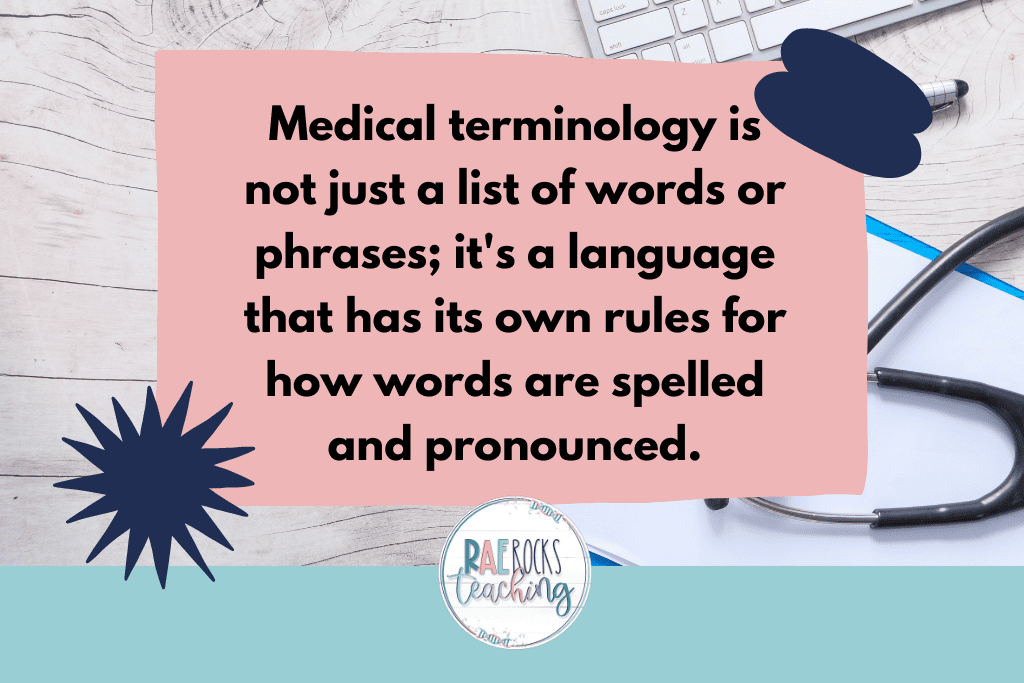
-
Save
Medical Terminology Rules
A prefix is a word element attached to the beginning of a word or word root. A prefix usually indicates a number, time, position, or direction. You are probably already familiar with many of the prefixes found in medical terminology because they are also used in everyday conversation!
A root word is the main part or foundation of a word. All words have at least one-word root. A root may be used alone or combined with other elements to form a complete word. In medical terminology, the root word typically refers to a body part.
Correct pronunciation of medical words is important. In order to make the pronunciation of root words easier, sometimes it is necessary to insert a vowel after the root. The combination of a word root and vowel is known as a combining form. The combining vowel is typically an “o”, but others may be used. Combining form is typically written with a diagonal such as cardi/o. The combining vowel is required when combining two roots OR when a suffix begins with a consonant.
A suffix is a word element placed at the end of a word or word root that changes the meaning of the word. Changing the suffix changes the meaning of the word. In medical terminology, a suffix usually indicates a procedure, condition, disease, or part of speech.
Directions for Students
1. A prefix is always placed at the beginning of the word.
2. A suffix is always placed at the end of the word.
3. If a suffix begins with a consonant, the combining vowel must be used.
4. When more than one root word is used, it is a compound word and requires the use of a combining vowel to separate the words (even if the second root word begins with a vowel).
5. Medical terms cannot end with a combining form vowel. It must be dropped, and a suffix added.
6. When defining medical terms, begin with the suffix and read backward.
7. If the word contains both a prefix and a suffix, define the suffix first, prefix second, and root word(s) last.
8. When using compound words that relate to parts of the body, anatomic position determines which root word comes first.
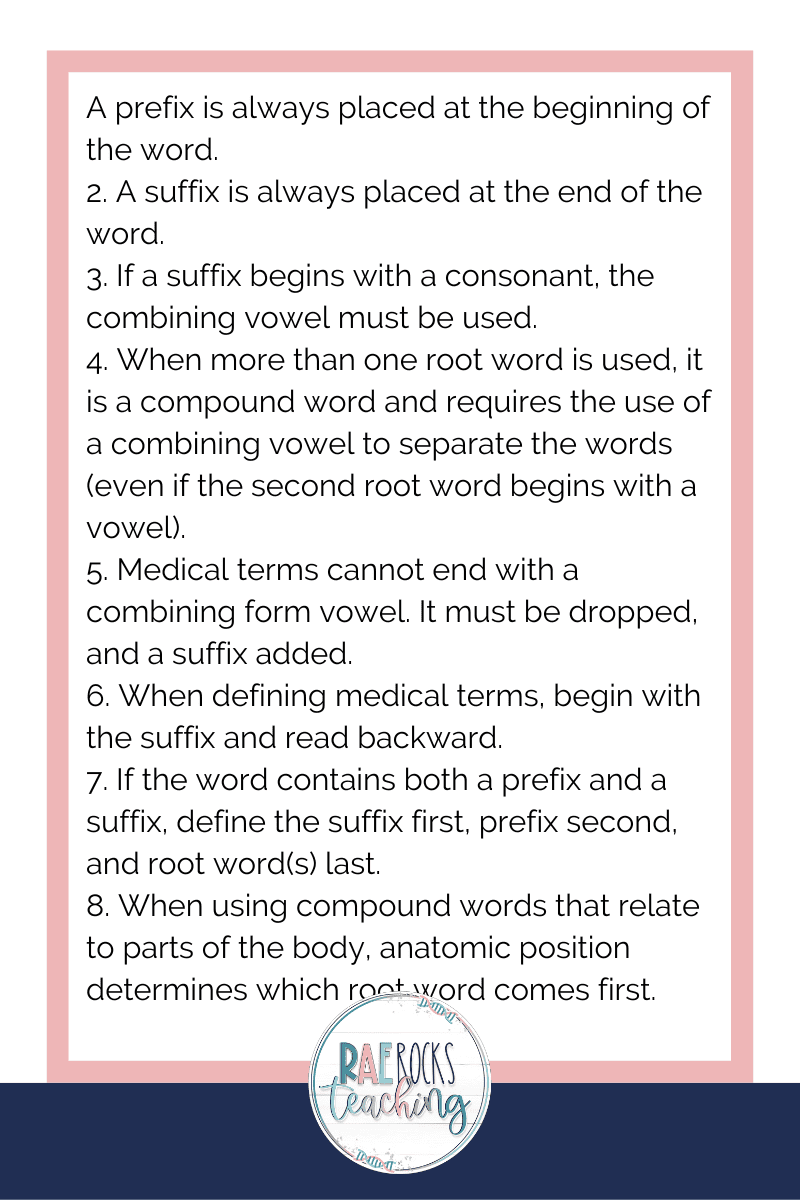
-
Save
Medical Terminology Activity
Medical terminology can be difficult for students, especially if they have not had any experience with it before. This activity is a fun way for students to learn some basic medical terminology without feeling intimidated by it. They will also be able to use what they learn when they are reading about or researching different diseases or illnesses. Medical terminology includes words and phrases that are used to describe diseases, symptoms, treatments, and procedures. Words, including medical terms, are composed of three basic parts: word roots, prefixes, and suffixes. How the parts are combined determines their meaning. Changing any part of a word or medical term changes its meaning.
In the medical terminology activity, students are broken up into small groups and each group receives a large folder. The folder contains the directions for the activity and 3 different color cards. Each card color represents a different part of medical terminologies, such as yellow is for prefixes. The students must follow the directions on the assignment in order to correctly create medical terminology words. The activity is broken into sections so that they focus on a different rule of medical terminology. The activity builds as students move through it making it increasingly more challenging.
You will want to allow for at least one to two FULL class periods for students to complete this assignment. It is one that takes time, but it is so worth the investment so that your students get a strong understanding of medical terminology.
Don’t forget to grab your FREE COPY of The Ultimate Guide to Engage Students To Learn Anatomy | 7 Secrets To Implement Today

-
Save
I love sharing helpful content with y’all and would love to connect on IG or Facebook. I’m on TikTok too! Follow me and send me a DM with what you need more of because I’m here to help! If you are looking for even more inspiration, find me on Pinterest!
Wanna read more?
The Flipped Classroom and Technology You Need to Make it Successful for Anatomy
My 5 Favorite Videos of Human Anatomy that Engage Students
Share via:

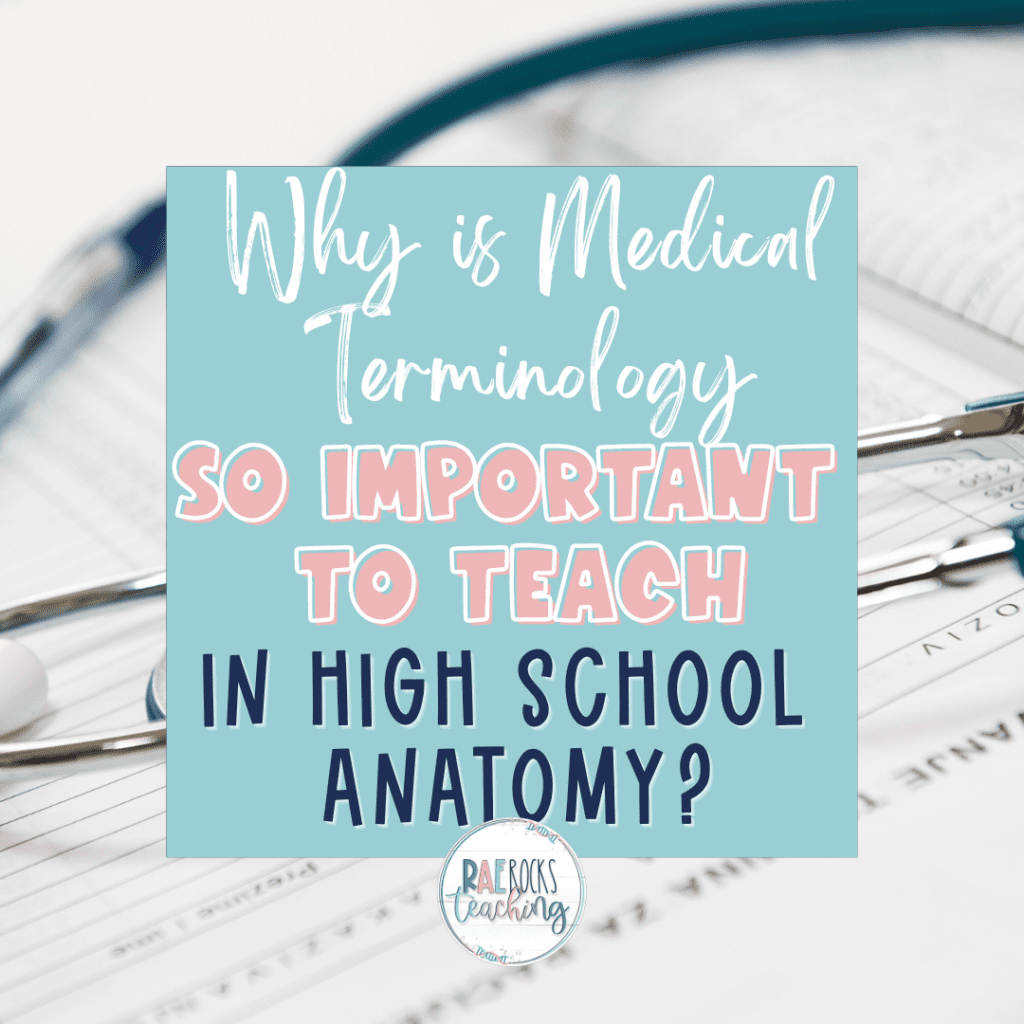
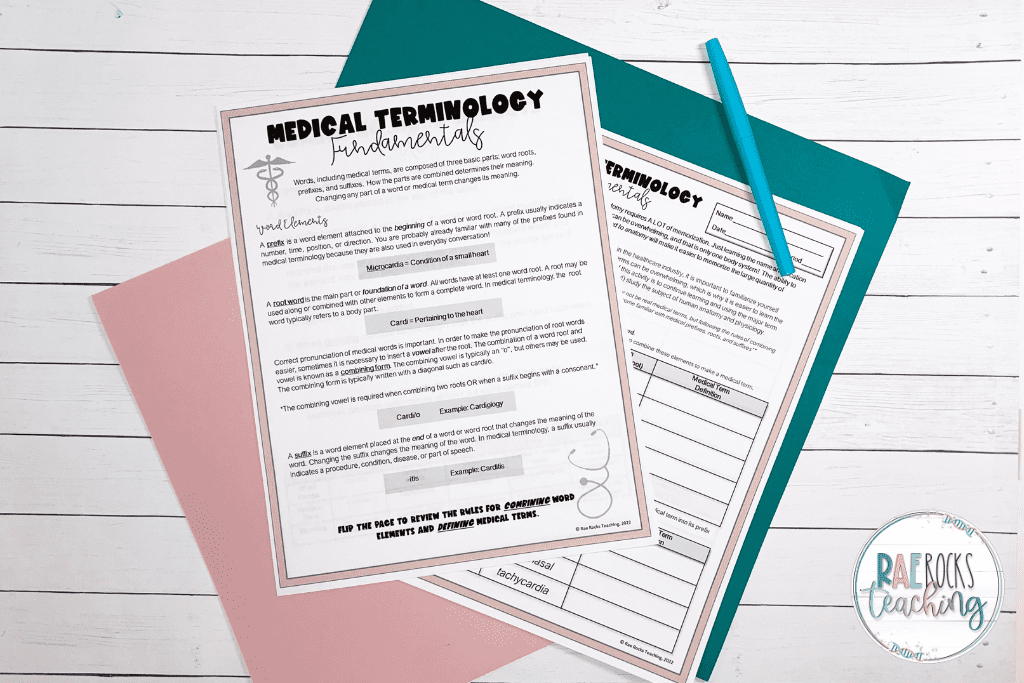
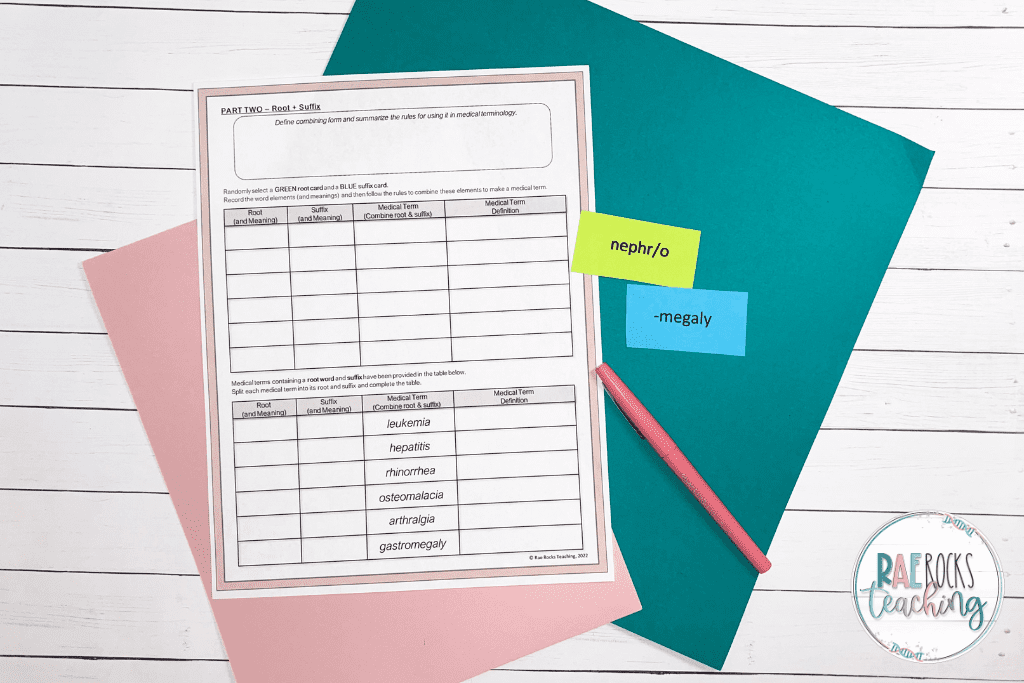







3 Responses
Morning
I purchased medical terminology worksheet (thank you!), and was wondering if you have a power point as well. Thanks!
Hey there! Thank you for your purchase. I do not have a powerpoint for this activity.